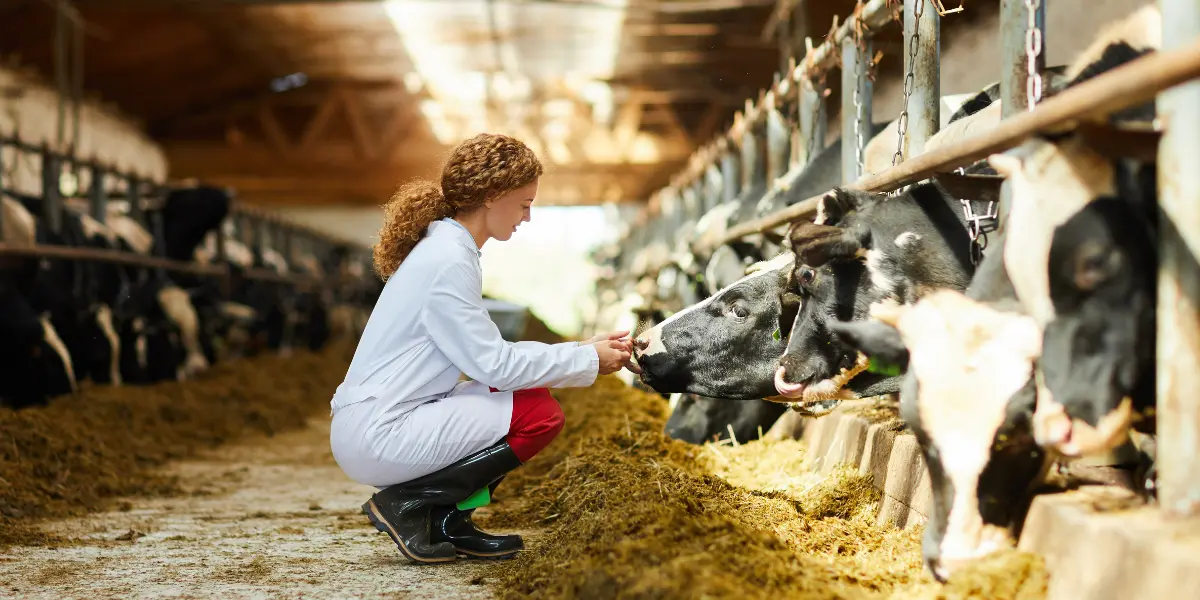Veterinarians in high demand for live animal production operations

In the last year, we’ve launched five senior veterinarian searches and have witnessed live animal production organizations working to attract new talent to the field in a few unique ways.
The agriculture industry is facing a critical shortage of veterinarians across the board. At the same time, the demand for top veterinarian talent has never been higher.
With the rise of animal-borne viruses and antibiotic resistance, veterinarians are now being hired as specialists in leading live animal production organizations. For example, pork producers now seek veterinary candidates with deep swine experience to address the specific issues they’re seeing on their farms. Higher regulation is also contributing to the need for strong veterinary talent.
The FDA now requires veterinarians to oversee and authorize the use of antibiotics in animal feed to prevent overuse or misuse. Everything from small farming operations to global agriculture firms producing food for public consumption must comply with this policy, which requires either a contracted or full-time veterinarian.
In this article, we’ll discuss why younger generations are less likely to pursue the veterinary field, what impact this development has on the industry and what hiring authorities at live animal production operations are doing to combat the issue.
Why we’re seeing fewer young people go to veterinary school
The journey to becoming a veterinarian is no easy task. In fact, the difficult work and education debt associated with getting into vet school is often the first roadblock for those interested in this career. For those who do, the traditional route is to pursue an undergraduate degree in biology or life sciences, go to vet school and then start a practice or work for a large food producer. However, the lifestyle these careers entail has fallen out of favor with many recent graduates.
The common 4-5 days of weekly travel, rural living, isolation and challenging weather conditions, make this a challenging career. In fact, less than 5% of new vet grads show an interest in the rural animal health sector compared to nearly 40% of grads choosing this specialization four decades ago. Many are instead pursuing careers in related fields like research, medicine or genetics, but the ones who end up in live animal production organizations are being compensated to make up for this gap.
Recruitment strategies to land top veterinarian talent
Vet school graduates can now expect salaries in the $100,000 to $150,000 range to go work for a live animal production organization. But even with this bump in compensation, recruiting is competitive. Many organizations are now taking additional steps to write compelling offers, including covering the rising price of student debt. Mirroring compensation, we’ve also seen senior veterinarian talent take on larger titles such as vice president, but these roles often require candidates to have well-developed people and leadership skills as they might be asked to lead a team or outsource additional veterinarians.
The takeaway:
Live animal production organizations are experiencing a critical shortage of veterinarians due to high education costs, challenging work conditions and increased competition for new graduates. To attract talent, organizations are offering competitive salaries and innovative recruitment strategies, including addressing student debt and providing leadership opportunities.
To learn more, contact Eric Spell at (336) 217-9116 or eric.spell@charlesaris.com.
SIMILAR ARTICLES
Meaningful conversations: How our deal-sourcing team connects with founders
We launched our transaction services business with the guiding philosophy that meaningful conversations lead to successful deals.
The new era of workplace wellness at Charles Aris
Throughout the past year, we’ve also integrated firmwide activities into our culture to promote healthy meditation, social events and exercise.
Charles Aris in the community
Our firm places a high value on giving back to our communities, and our team members have been working alongside several organizations to do so.




